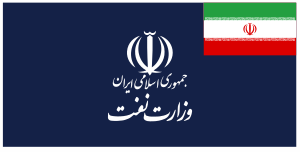Staff units

-
Name
Elham HasaniAzar
-
Post
Internal Audit Director
The main purpose of internal audit is to identify strengths and weaknesses, improve them and provide appropriate methods to improve the quantity and quality of company performance and review and adapt executive operations to the methods announced and communicated by the company and competent authorities.
In other words, the purpose of internal auditing is to assist the board of directors and the managing director in ensuring that the following are properly implemented, observed or achieved:
1) Proper implementation of the internal control system and identification of its strengths and weaknesses.
2) Proper implementation of financial and operational plans in accordance with company policies.
3) Accuracy and reliability and transparency of published information and reports, including financial, administrative operational reports and etc.
4) Efficient and effective management of available resources, including manpower and other assets of the company.
5) Observance of directives, instructions, by-laws, approvals and current laws and their non-deviation.
Responsibilities:
The main axes of providing services of the internal audit unit are as follows:
1) Evaluation and review of accounting and internal control systems; Supervise and control the implementation of accounting systems and provide corrective suggestions.
2) reviewing financial and operational reports; Examine the basics used to identify, measure, classify, and report, as well as conduct special investigations (including transaction tests and account balances and methods) on each specific item or operation.
3) Review how to implement laws, regulations and other external requirements and policies, management instructions and other internal requirements.
Duties:
The main axes of providing services of the internal audit unit are as follows.
1) Study and review the activities of different units of the company and the documents and reports prepared in order to be aware of their compliance with laws and regulations, articles of association, directives, instructions and bylaws.
2) Review of financial statements and the degree of compliance with accounting standards and the degree of reliability and reliability of financial statement information.
3) Reviewing the proper implementation of the approvals of the company's board of directors at the appointed time;
4) Reviewing and following up the duties and approvals of the company's assemblies.
5) Reviewing the observance and correct implementation of the company's by-laws, including financial, transactions, employment, and, if necessary, proposing to review and amend them.
6) Assessing the efficiency and effectiveness of the company's internal control system.
7) Reviewing operational and support processes with a value engineering approach and, if necessary, proposing to review and modify them in proportion to the development of the company's activities.
8) Reviewing and controlling operations related to auctions, tenders and selecting domestic and foreign contractors to carry out projects, as well as reviewing the manner of concluding contracts to ensure compliance with all existing regulations, guidelines and standards and protecting the company's interests.
9) Reviewing the performance and budget of the company and submitting periodic reports.
10) Review of contracts and transactions of the company.
11) Review of corporate social responsibilities.
12) Addressing specific issues that may be deemed necessary as a result of the audits performed or referred to the audit unit by the CEO.
Authorizations:
The Board of Directors, within the framework of the responsibilities of the Internal Audit Unit, authorizes it to have access to the following:
1) Image of the company's articles of association;
2) General diagrams of organizational structure and different parts, description of duties of organizational positions, responsibilities and limits of related authorities;
3) The number of employees according to the nature of their activity, type of employment, education and its changes in previous years and the year under review;
4) Minutes of general assemblies, boards of directors, commissions and committees;
5) Picture of the required financial statements of the previous years and the year under review;
6) Picture of the report of the activities of the Board of Directors to the General Assembly related to the previous years required and the year under consideration;
7) Image of the last audit report of the financial statements and the relevant management letter;
8) Picture of reports prepared by auditors, experts and other consultants that can meet some of the objectives of internal auditing;
9) Information systems such as financial and administrative automation system, uniform system of goods located in the company, comprehensive personnel system of oil industry and…

